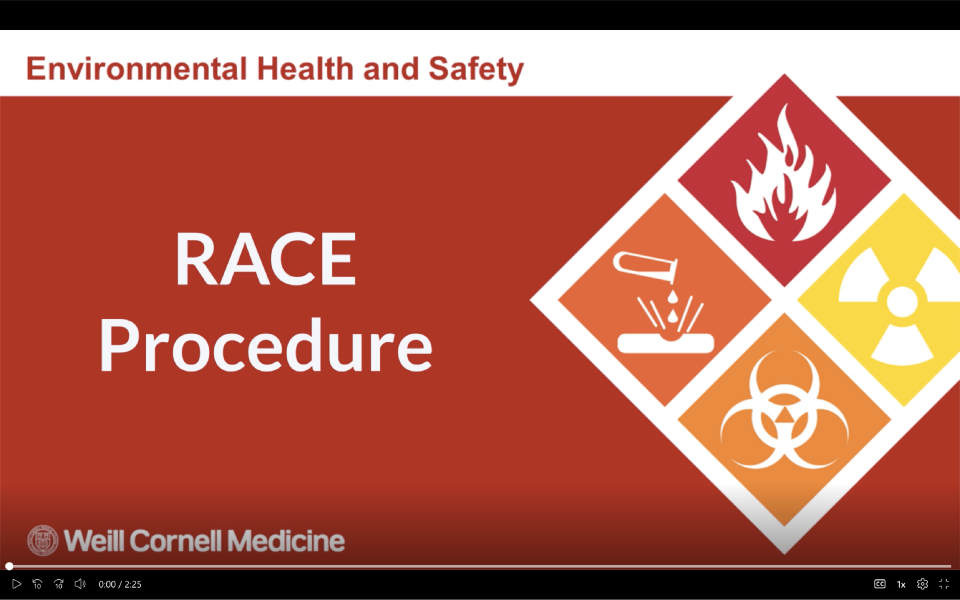Fires can lead to personal injury, loss of life, property damage, and loss of research. The U.S. Fire Administration National Fire Protection Association reports that there are approximately 1,700 documented fires in college dormitories, classroom buildings, and fraternities and sororities annually.
Students, faculty, and staff must know the specific fire and evacuation procedures for the facilities they routinely occupy. Building-specific Fire Safety and Evacuation Procedures are provided for all WCM-occupied buildings in the Fire Safety and Emergency Action Manual.
Fire and Smoke Conditions:
Signs of fire include visible flame or visible smoke. In the event visible flame or visible smoke is seen, building occupants must initiate the R.A.C.E. procedures outlined in the Building-Specific Fire Safety and Evacuation Procedures.
The smell of smoke is not an immediate sign of fire. Contact Environmental Health and Safety at 646-962-7233 to report the smell of smoke.
Race Procedures:
R.A.C.E. is an acronym for the general procedures all occupants should follow in the event of a fire, visible smoke, or fire alarm activation. Building-specific R.A.C.E. procedures are provided at the end of the Fire Safety and Emergency Action Manual.
Please review the R.A.C.E procedure through this short training video:
R.A.C.E Acronym
R – RESCUE: Remove occupants from the affected area. Provide assistance to others as appropriate. For patient care areas, rescue those in immediate danger from fire or smoke.
A – ALARM: Report the fire to the other occupants in the immediate vicinity by shouting “CODE RED” or “FIRE”. Activate the nearest fire alarm pull station to alert building occupants of the fire. Occupants in NYP buildings must call the NYP fire hotline at 746-FIRE (3473).
C – CONFINE: Close all doors, including interior doors, to the area to confine the fire and minimize the risk of the fire spreading to the building. Damp towels should be placed at the base of the door to minimize smoke entering an area where occupants or patients are unable to evacuate.
E – EVACUATE / EXTINGUISH: In the event of a fire or fire alarm activation, occupants must exit the premises as specified in the Building-Specific Fire Safety Procedures or EHS-approved local fire safety plan. Fire extinguishers should only be used by trained personnel to extinguish small fires, and only after the other R.A.C.E. procedures have been fully implemented.
Communication with Response Personnel:
Occupants should notify building security, EHS staff, and/or the Fire Department of the location of any injured and/or physically impaired occupants who are unable to evacuate.
Additionally, occupants familiar with the fire or incident should remain available (e.g., at the building entrance or with response personnel) in the event response personnel have questions.
Elevator use During a Fire:
Do not use elevators during fires or fire alarm activations, unless specifically authorized to do so by the Fire Department. Elevators may stop and trap occupants.
If your clothing is on fire:
- Stop, Drop to the ground or floor and Roll to smother flames.
- Smother flames using a fire blanket.
- Drench with water from a safety shower or other source.
- Seek medical attention for all burns and injuries.

